Museums Midterm - Paintings
1/39
There's no tags or description
Looks like no tags are added yet.
Name | Mastery | Learn | Test | Matching | Spaced |
|---|
No study sessions yet.
40 Terms
Renaissance Spanish Artists
Juan de Juanes, Titian, El Greco
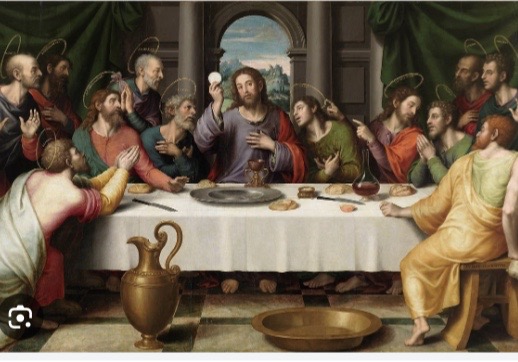
1.
Renaissance, Juan de Juanes: The Last Supper
Description: Christ and Apostles at the table during the Eucharist
Analysis:
Line: Clear contours emphasize symmetry
Color: warm, harmonious palette
Light: centralized illumination around Christ
Space: Linear perspective toward vanishing point at Christ’s head
Composition: Balanced, calm, devotional
Interpretation: Spanish Renaissance religious paintings emphasizing unity, spirituality, and moral order.
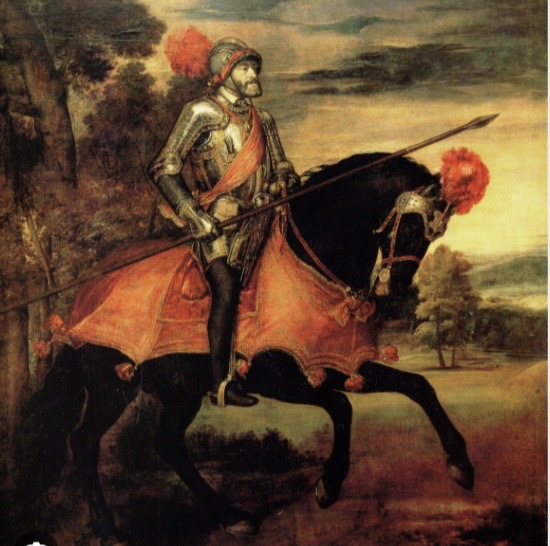
2
Renaissance, Titian, Portrait of Charles V at Muhlberg
Description: Emperor on horseback, victorious yet dignified.
Analysis:
Line: diagonal lines create motion
Color: Rich reds, golds, and dark armor tones
Light: Dramatic light enhances heroic presence
Composition: Triangular structure; horse and rider dominate
Interpretation: Imperial power and Renaissance humanism fused through portraiture and symbolism.
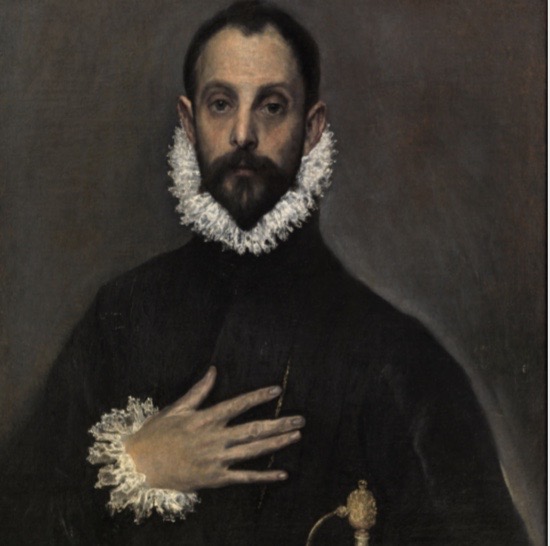
3.
Renaissance, El Greco: The Nobleman with his Hand on his Chest
Description: Portrait of a solemn nobleman in black attire.
Analysis:
Line Sharp verticals emphasize dignity.
Color: Limited color palette, contrasts of black and white
Light: focused illumination on face and hand
Composition: centered, introspective
Interpretation: Mannerist spirituality and Spanish introspection; conveys moral integrity
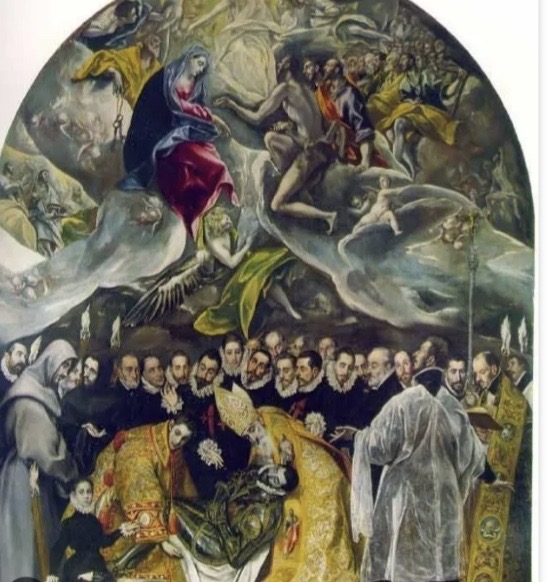
Renaissance, El Greco: The Burial of the Count of Orgaz
Description: Heavenly and earthly realms united in one composition.
Analysis:
Line: vertical division connects earth and heaven
Color: Golden divine light versus darker earthly tones
Light: Symbolic; divine illumination above
Composition: dual structure; complex but harmonious
Interpretation: A masterful depiction of the intersection between the divine and human experience, reflecting El Greco's deep religious fervor and unique stylistic approach.
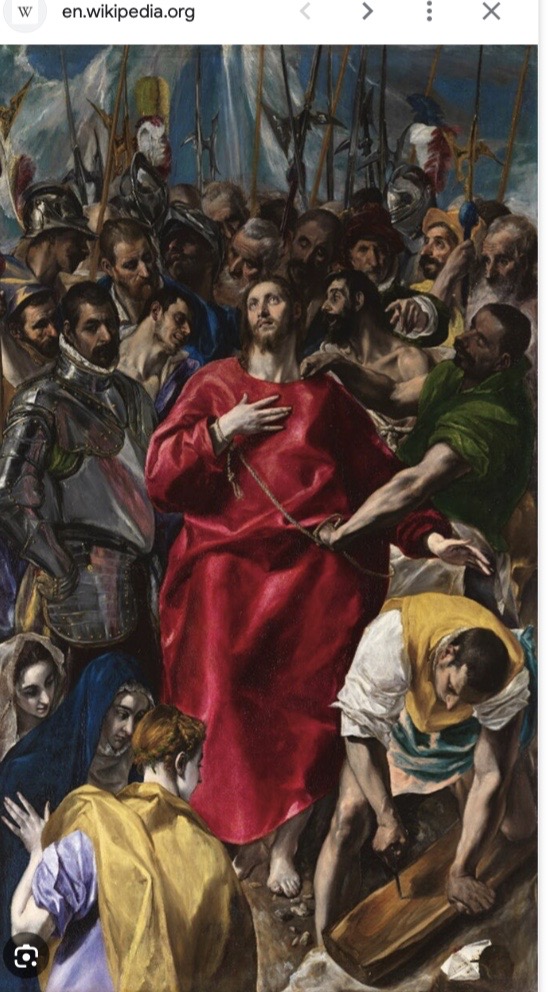
5.
Renaissance, El Greco: The Disrobing of Christ
Description: Christ at center, red robe glowing amid crowd.
Analysis:
Line: Swirling, elongated forms
Color: Dominant crimson red for divinity and suffering
Light: Intense spotlight effect
Composition: Christ isolated amid chaos
Interpretation: Emotional spirituality and expressive distortion reflect Counter-Reformation drama
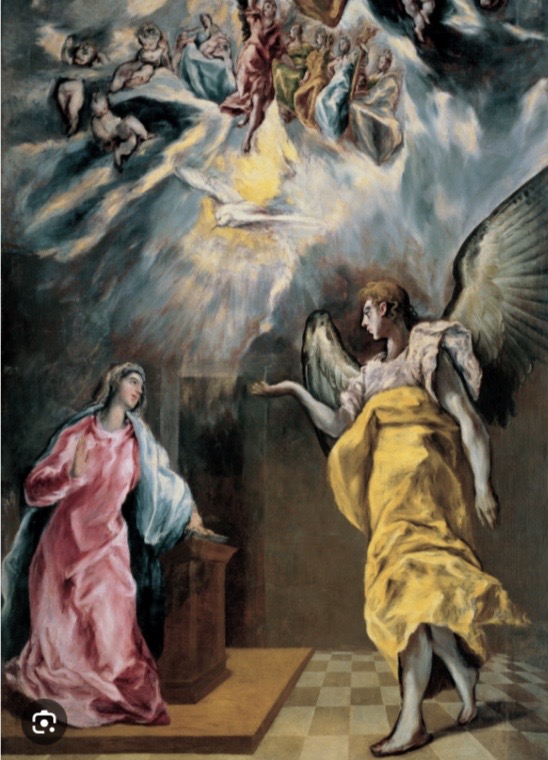
6.
Renaissance, El Greco: Annunciation
Description: Angel and Virgin in vertical composition
Analysis:
Color: blues and golds; ethereal atmosphere
Light: Symbolic divine radiance
Composition: Diagonal connection heaven and earth
Interpretation: A significant depiction of the moment the Angel Gabriel announces to the Virgin Mary that she will conceive the Son of God, conveying a sense of divine intervention and grace.
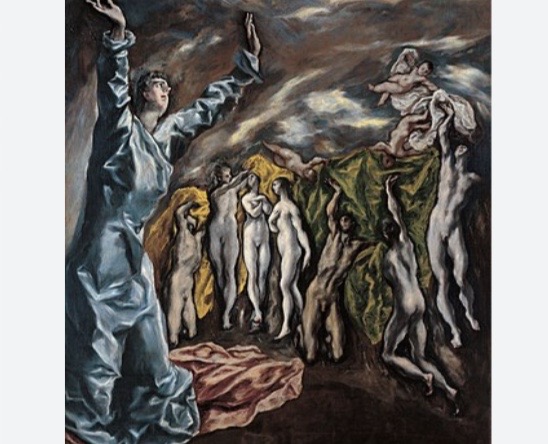
7.
Renaissance, El Greco: The Opening of the Fifth Seal
Description: Apocalyptic vision with ecstatic figures.
Analysis:
Line: Angular, exaggerated
Color: Stark contrasts of blues, yellows, flesh tones
Light: Fragmented, visionary
Interpretation: A depiction of the moment described in the Book of Revelation, showcasing the martyrs under the altar and their plea for justice, illustrating El Greco's unique approach to spirituality and expression.
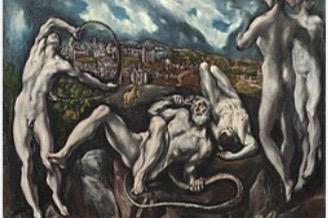
8.
Renaissance, El Greco: Laocoon
Description: Greek myth reimagined in a Toledo landscape
Analysis:
Line: Twisted bodies, serpentine forms
Color: Cold palette, spiritual tension
Space: Unnatural perspective enhances anxiety
Interpretation: allegory of human suffering expressive distortion foreshadows the emotional turmoil and chaos inherent in the human condition, reflecting the struggle against fate and divine will.
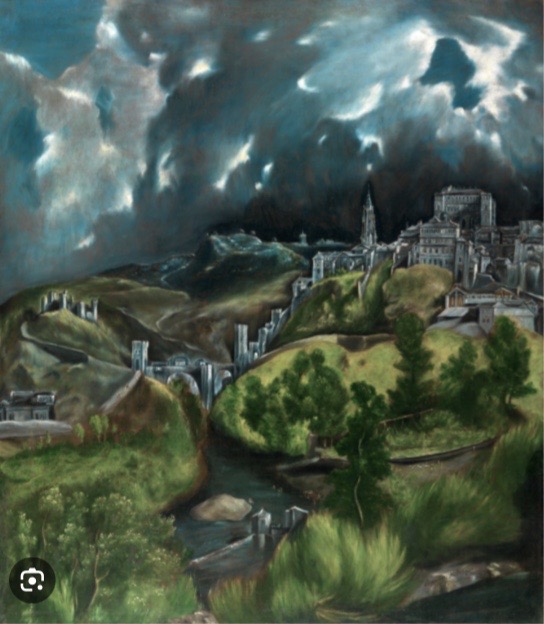
9.
Renaissance, EL Greco: View of Toledo
Description: Dramatic cityscape under stormy sky.
Analysis:
Color: dark greens, blues, and grays; emotional atmosphere
Light: dramatic contrasts, supernatural glow
Composition: Asymmetrical, turbulent
Interpretation: one of the earliest landscape masterpieces; mystical vision of Toledo’s soul.A depiction of the city of Toledo, capturing its emotional resonance through dramatic colors and dynamic forms, merging nature with spirituality.
Baroque Spanish Artists
Ribera, Zurbaran, Murillo, Diego Velazquez
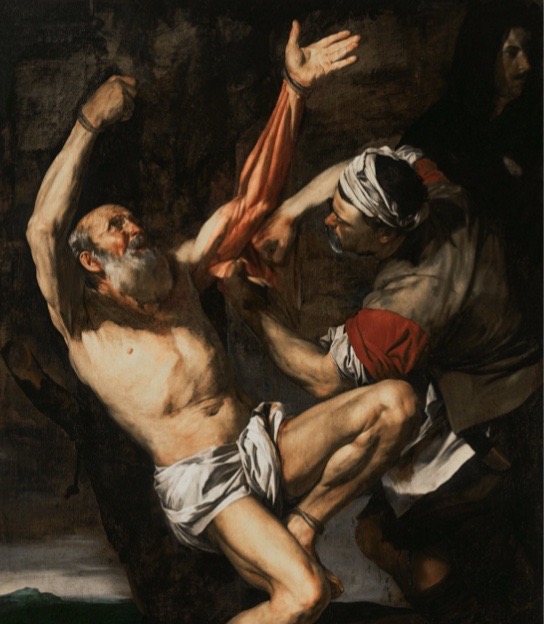
10.
Baroque, Ribera: The Martyrdom of Saint Bartholomew
Analysis: Harsh realism, muscular tension, strong chiaroscuro, dramatic vertical composition.
Interpretation: Baroque naturalism emphasizing human suffering and faith.
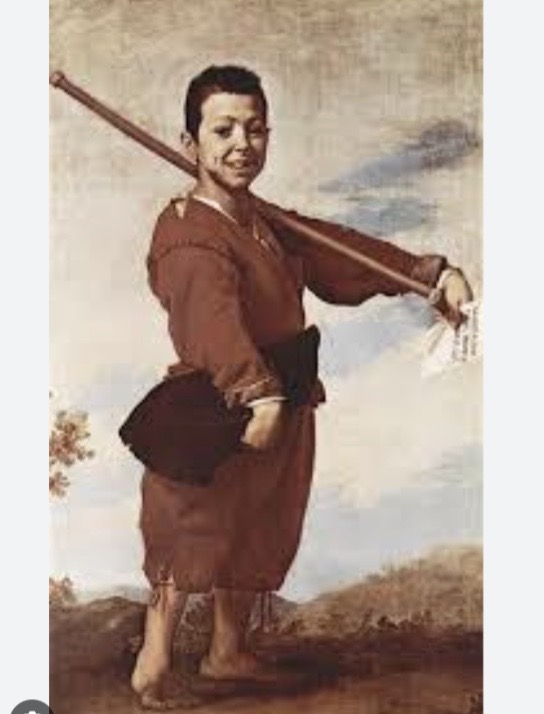
11.
Baroque, Ribera: The Clubfoot
Analysis: Compassionate realism, psychological depth, earthy tones, humble dignity.
Interpretation: Elevates marginal figures with moral and spiritual dignity.
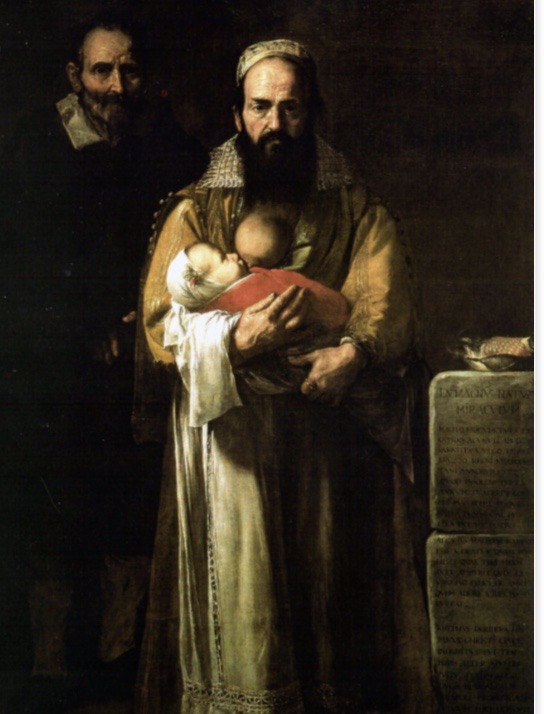
12.
Baroque, Ribera: The Bearded Woman or Magdalena Ventura
Analysis: Intense realism, dark background, strong light on faces.
Interpretation: Baroque fascination with the extraordinary and divine mystery in the human body.
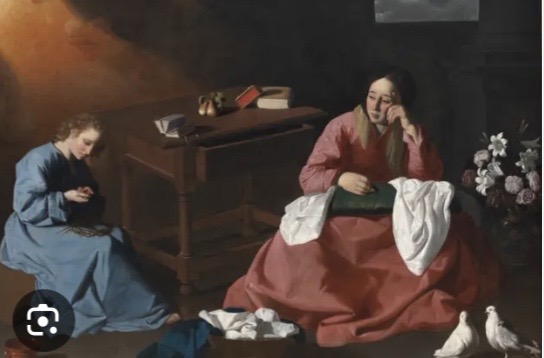
13.
Baroque: Zurbaran: Christ and the Virgin in the House at Nazareth
Analysis: Quiet domestic spirituality, soft light, sparse setting.
Interpretation: Mystical realism; devotion through simplicity and silence.
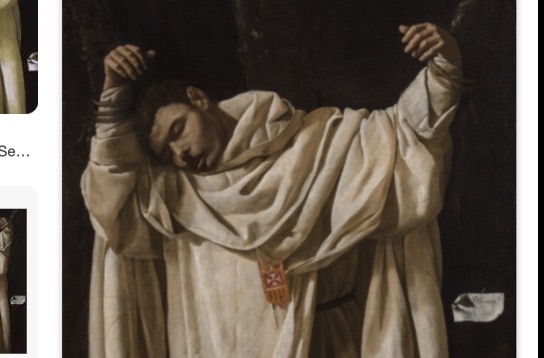
Baroque: Zurbaran: The Martyrdom of Saint Serapion
Analysis: White drapery, minimal background, soft light.
Interpretation: Poetic stillness; martyrdom as peaceful sacrifice.
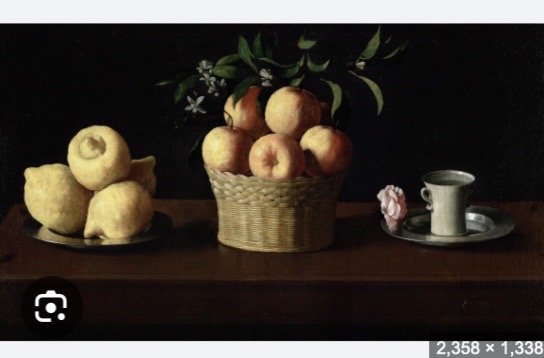
Baroque, Zurbaran: Still Life with Lemons, Oranges, and a Rose
Analysis: Balanced geometry, cool tones, delicate texture.
Interpretation: Contemplative simplicity; spiritual symbolism in everyday objects.
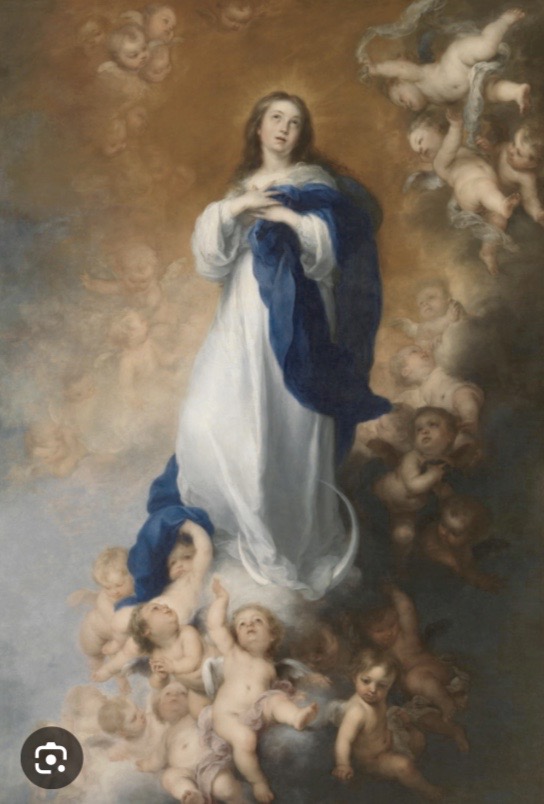
16.
Baroque, Murillo: The Immaculate Conception of Los Venerables
Analysis: Radiant light, soft forms, ethereal clouds.
Interpretation: Idealized Marian beauty; emotional Catholic devotion.
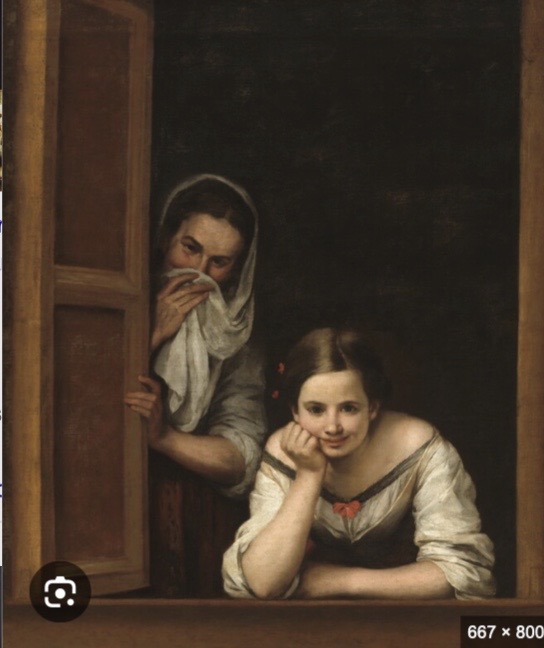
17.
Baroque, Murillo: Two Women at a Window
Analysis: Realistic street scene, playful intimacy, natural light.
Interpretation: Secular warmth and human tenderness within Baroque naturalism.
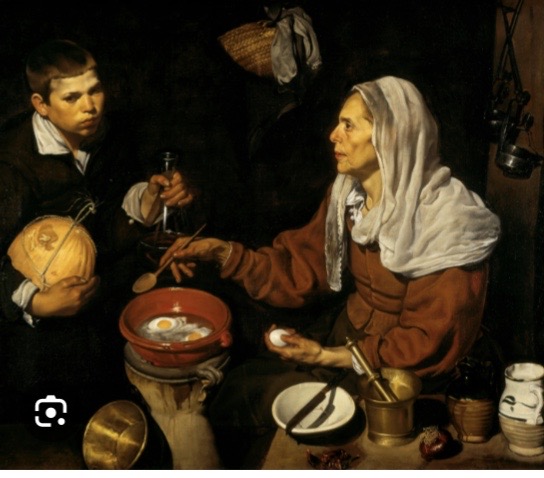
18.
Baroque, Diego Velazquez: Old Woman Frying Eggs
Analysis: Tenebrism, everyday realism, textured surfaces.
Interpretation: Genre scene with deep psychological observation.
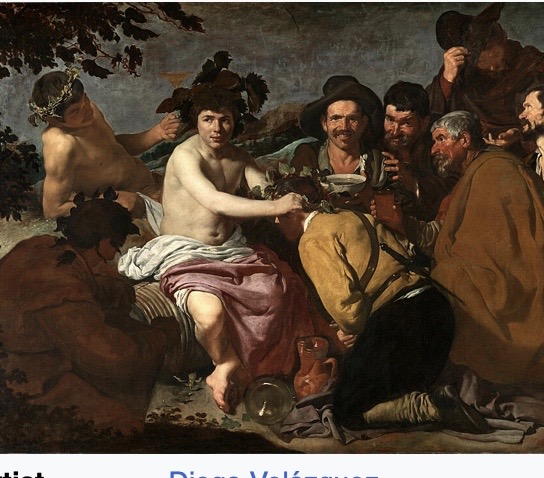
19.
Baroque, Diego Velazquez: The Triumph of Bacchus
Analysis: Mix of divine and earthly figures, warm tones, natural light.
Interpretation: Celebration of humanity and illusion; blend of myth and realism.
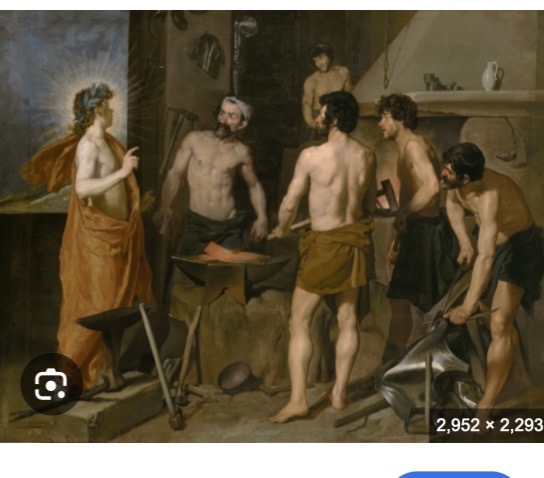
20.
Baroque, Diego Velazquez: The Forge of Vulcan
Analysis: Strong anatomical realism, warm light, everyday setting.
Interpretation: Classical myth humanized; intellect and craft glorified.
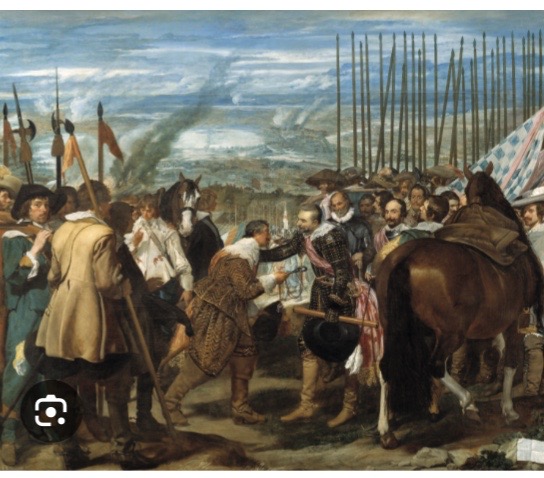
Baroque, Diego Velazquez: The Surrender of Breda
Analysis: Balanced composition, restrained emotion, atmospheric perspective.
Interpretation: Honor and magnanimity in warfare; political allegory.
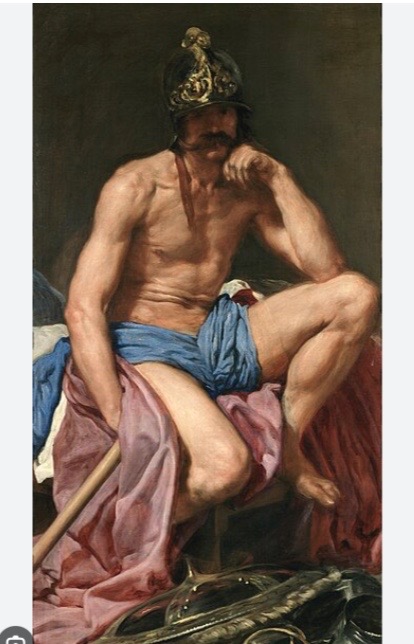
Baroque, Diego Velazquez: Mars Resting
Analysis: Realistic nude, subdued colors, introspective mood.
Interpretation: Demythologized hero; psychological depth.
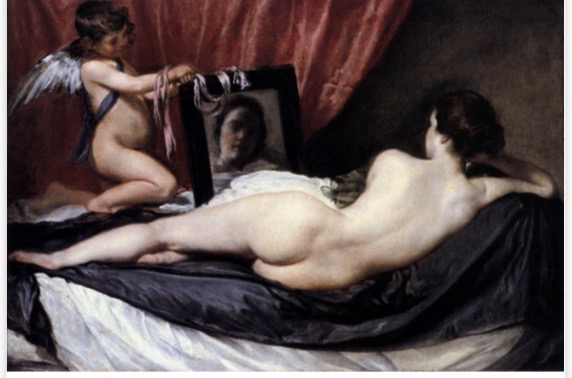
Baroque, Diego Velazquez: Venus at her Mirror (The Rokeby Venus)
Analysis: Soft sensuality, muted palette, reflective composition.
Interpretation: Subtle eroticism; ideal beauty meets psychological introspection.
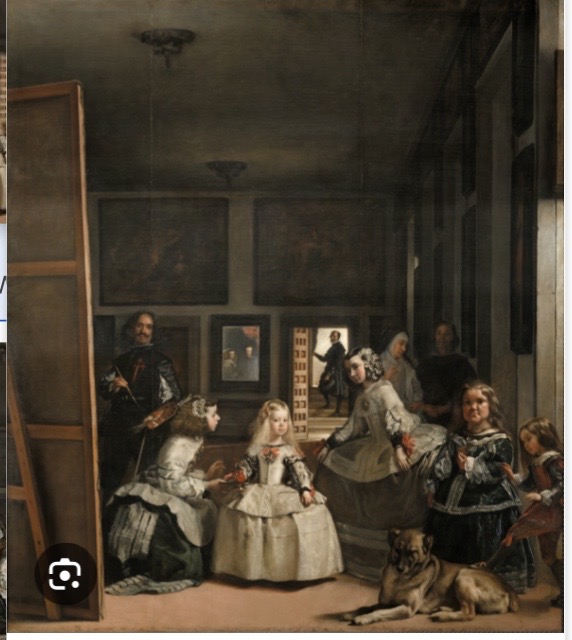
Baroque, Diego Velazquez: Las Meninas
Analysis: Complex spatial illusion, soft light, mirror reflection.
Interpretation: Meta-painting exploring perception, reality, and status.
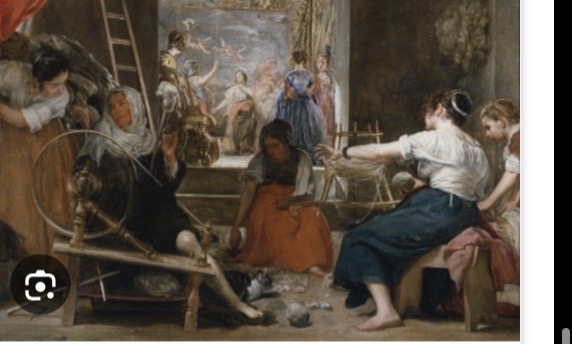
25.
Baroque, Diego Velazquez: The Fable of Arachne (The Spinners)
Analysis: Layered narrative, deep space, motion in figures.
Interpretation: Allegory of art and rivalry; merging myth with labor realism.
Neoclassic Spanish Artists
Jose de Madrazo, Anton Raphael Mengs, Juan de Villanueva
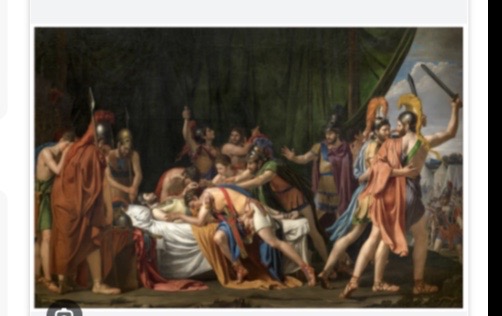
Neoclassicism, Jose de Madrazo: The Death of Viriatus
Analysis: Clear forms, heroic poses, calm composition.
Interpretation: Nationalist moral lesson; Roman virtue revived.
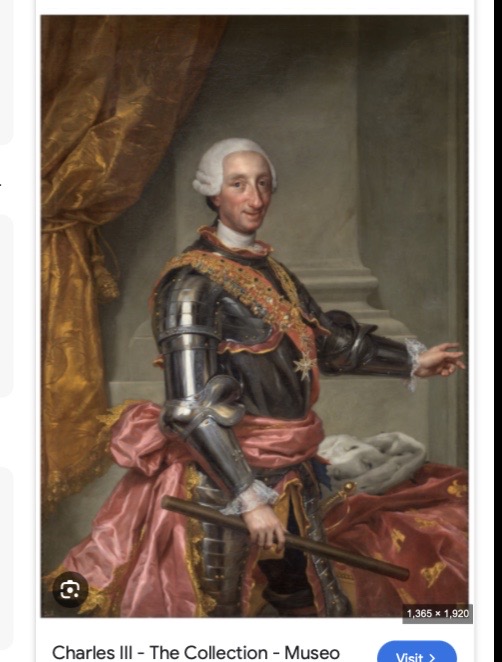
27.
Neoclassicism, Anton Raphael Mengs: Charles III of Spain
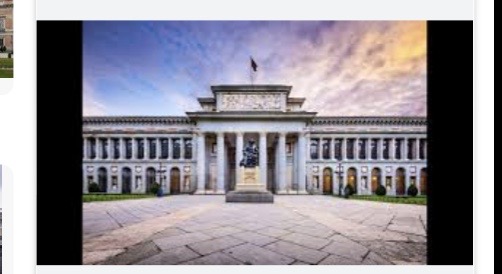
28.
Neoclassicism, Juan de Villanueva: The Museo del Prado
Romanticism Spanish Artists
Antonio Gisbert, Francisco de Goya
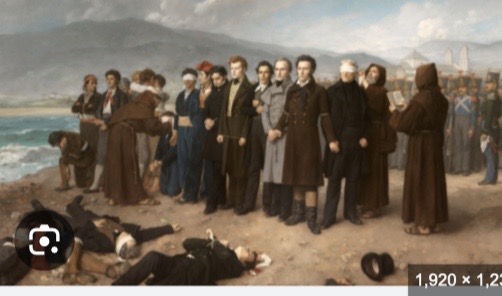
29.
Romanticism, Antonio Gisbert: The Execution of Torrijos and his Companions
Analysis: Dramatic chiaroscuro, tragic composition, emotional realism.
Interpretation: Political martyrdom and national heroism; Romantic empathy for sacrifice.
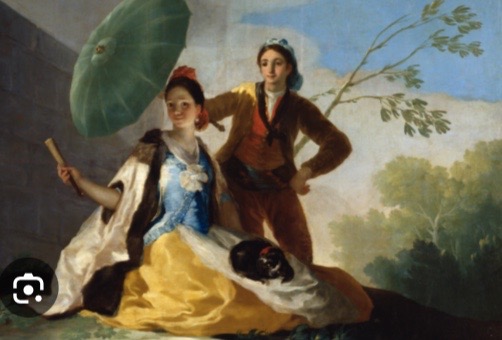
30.
Romanticism, Francisco de Goya: The Parasol
Analysis: Bright colors, gentle scene, Rococo influence.
Interpretation: Lighthearted portrayal of Spanish leisure; early Goya optimism.
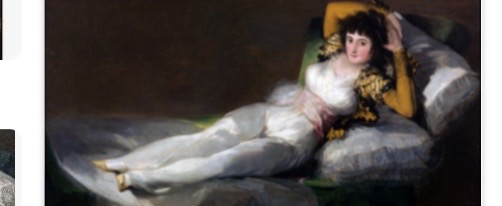
31.
Romanticism, Francisco de Goya: The Nude Maja and The Clothed Maja
Analysis: Sensual realism, warm tones, direct gaze.
Interpretation: Challenge to social norms and idealized beauty.
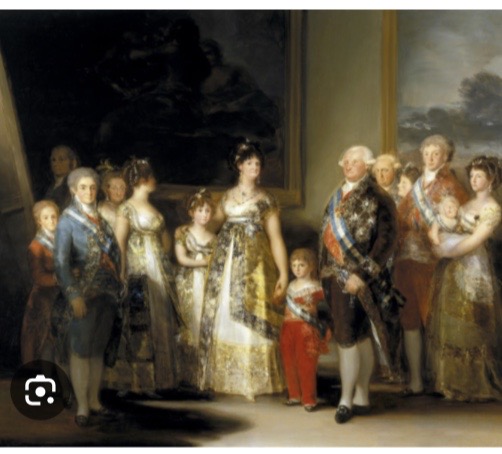
32.
Romanticism, Francisco de Goya: Charles IV and his Family
Analysis: Realistic portrait, unflattering truthfulness.
Interpretation: Subtle critique of monarchy; psychological realism.
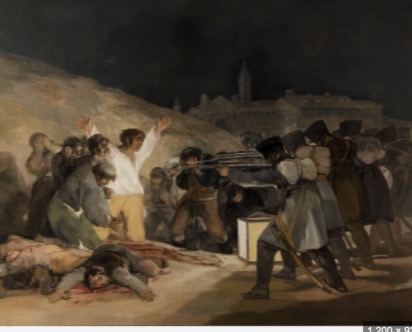
33.
Romanticism, Francisco de Goya: The Third of May 1808
Analysis: Stark contrasts, expressive gestures, chiaroscuro.
Interpretation: Human suffering and political brutality; Romantic humanitarianism.
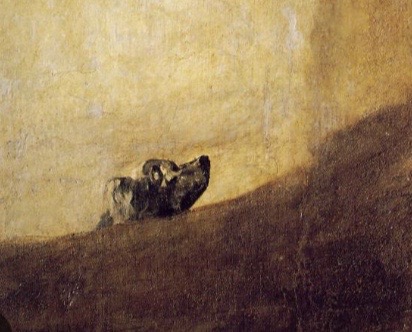
34.
Romanticism, Francisco de Goya: The Dog
Analysis: Minimal composition, empty space, emotional isolation.
Interpretation: Existential despair; precursor to modernist abstraction.
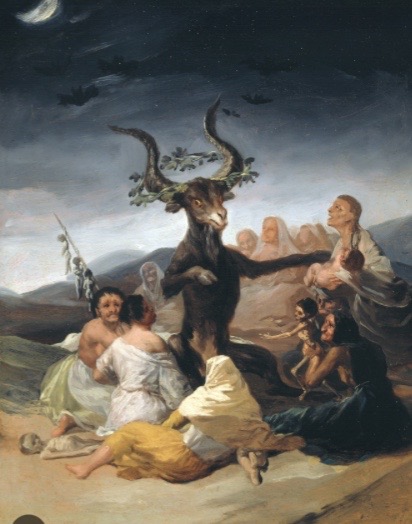
35.
Romanticism, Francisco de Goya: Witches’ Sabbath or The Great He-Goat
Analysis: Dark palette, grotesque figures, expressive brushwork.
Interpretation: Exploration of fear, superstition, and madness.
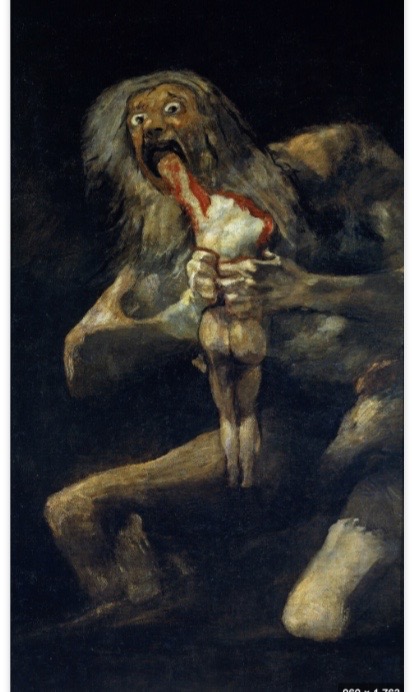
36.
Romanticism, Francisco de Goya: Saturn Devouring His Son
Analysis: Violent brushstrokes, dark palette, stark contrast.
Interpretation: Descent into horror and the human psyche; allegory of time and destruction.